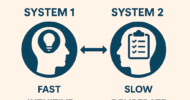So you’ve been vaccinated, and some of your close friends have been vaccinated, the weather is getting warmer, and you are beginning to feel like it might be safe to see a few folks in an outdoor, controlled setting. In-person. For the first time in a year. After the initial relief and post-vaccine euphoria begin to fade, a new sensation begins to emerge. Let’s call it “post-pandemic in-person panic” disorder.
At the beginning of the pandemic, you approached your new virtual world with grit, curiosity, and determination to show solidarity. You bought your warm-hued Zoom light. You continued to get showered and dressed up for your Zoom meetings. You scheduled Zoom happy hours with close friends near and far, cooked meals together, watched the same Netflix shows at the same time. You tried Google Meet, High Five, Microsoft Teams, Hangout, Clubhouse, House Party and every other virtual meeting room. Within six months, you came to hate them all.
Gradually, you stopped brushing your hair; you didn’t bother to shower; you rarely put on pants. More and more often, you turned off your camera, claiming “internet issues.” And over the past few months, you have embraced your bed as your office space. The happy hours grew further apart — you sent emails instead, then texts, then just a hand wave or kissy face emoji from time to time. Social distancing has become your sacred safe sanctuary.
And now, suddenly, you are expected to interact for a lengthy period of time with other humans.
In person.
Agh!
Like any unused muscle group, your social skills have atrophied — rusty at best. How do you work up to that socially attuned person you used to be? Not to worry. We are here to help. Like any good rehab program, you need to start slow and steady, lest you injure relationships and damage your already fragile self-esteem.
Step 1: Preparing for in person
Bathe. Brush your teeth. Look in the mirror and review your facial expressions. Practice the basic range of emotions that come up in normal conversation: Happy, sad, delighted surprise, empathetic concern. Avoid extremes. Try not to stray into hostility or hysteria. Practice a “resting face” that is calm and collected. Remember they can now see the bottom half of your face.
Try on your planned outfit in advance. Your hard pants are not as forgiving as your sweatpants and this pandemic has been especially challenging for our waistlines. With all the anxiety you are already experiencing, the last thing you need is to discover that nothing fits 15 minutes before you are seeing your friend.
Consider preparing small flashcards to bring with you. When you first see your friend, you will hand them over with the request that they use them as a “social skills reentry coach.” The messages could contain phrases such as: “Stop talking.” “Your face is doing something weird.” “It’s time to go home.” We recommend you shape them in little hearts with smiley face emojis to soften the blow and remind you that you are loved.
Not a bad idea to peruse your friend’s social media sites before you get together. They will assume you have kept up and might be insulted if you call their new partner by the name of their ex-spouse. You may also discover topics to avoid. For example, if you have a proud Biden/Harris sign in your front yard and you discover your friend’s Facebook selfies storming the Capital on Jan 6, you may want to avoid politics. Or the visit entirely. You may want to contact the FBI.
Step 2: “The Introduction”
Remember your “Manners 101.” Rehearse their name multiple times, trying to recall the pronunciation. Make sure you remember what their name is. Use phrases like: “So glad to see you again. I love your scarf.” Avoid saying out loud the phrases you hear in your head, such as “What is happening with your hair?” or “This conversation is so boring.”
Step 3: Getting into the flow: pacing and pauses
Beware of talk overs and long pauses to which you became accustomed in Zoomland. You don’t have to wait for the internet speed to catch up. When your friend stops speaking, it is now your turn to talk. Your response should be related to their last statement. If you feel comfortable, try to include an emotional facial expression connected to the statement (see above for help). Try not to spend too much time talking to the cat.
Step 4: Reading clues: non-verbal and verbal signs
Notice the nuances of voice tone, facial cues, and body posture. If their eyes are suddenly opened wide, and they have stepped away from you, you may have said something alarming. Review your last few words in your head and see if you need to do damage control. It is also possible your breath just smells bad.
Step 5: Ending
Don’t keep going and going on and on. Contain your needy desperation. Remember, this is probably the first foray for your friend as well. Eighty minutes is double Zoom time and should be plenty of time before both you and your friend are longing for your soft pants and your nightly ritual of watching a Netflix crime drama. Congratulate yourselves on a successful outing and call it a night.
Mary R. Talen is a psychologist. Deborah Edberg is a family physician.
Image credit: Shutterstock.com

























![Rethinking patient payments: Why billing is the new frontline of patient care [PODCAST]](https://kevinmd.com/wp-content/uploads/Design-3-190x100.jpg)





![Empowering IBD patients: tools for managing symptoms between doctor visits [PODCAST]](https://kevinmd.com/wp-content/uploads/Design-2-190x100.jpg)

